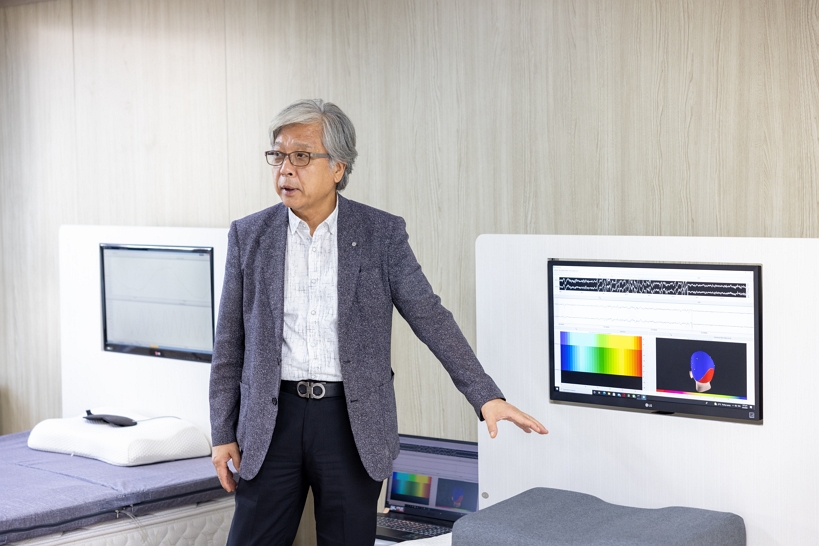Medicine is to maintain and promote health and prevent diseases, and when you are sick, you can recover and rehabilitate your health so that you can adapt to society. In general, medicine is largely divided into basic medicine, clinical medicine, and preventive medicine. There are three factors that cause the disease to occur. The first is the physical, biological, social, cultural, and economic environment. The second is the host (human), which is related to age, sex, nutrition, lifestyle, and medical type. Third, pathogens (factors) include bacteria, physical factors, and chemicals. Humans and pathogens have a leverage relationship with the environment. Therefore, increasing resistance to human diseases or improving various environments reduces the likelihood of becoming ill relatively. Looking at human history, it has long been trying to prevent diseases. For example, in the Old Testament, there was a practice rate of various hygiene necessary for nomadic life, and cholera and plague were prevalent in the Middle Ages, and quarantine was conducted for this purpose. In Korea, when giving birth, a gold string was hung on the gate to control the access of outsiders, preventing the infection of diseases to babies and mothers born. Humans have been preventing diseases for a long time like this, but they have known it through experience. However, after R. Koch figured out how to separate and cultivate bacteria in 1876, pathogens that cause the disease could be detected, and preventive medicine developed further. The stages of preventing diseases are often divided into three. Maintaining and promoting health through efforts such as improving the environment and increasing resistance to diseases before the outbreak is called primary prevention. It includes controlling physical strength and improving health through jogging and aerobic dance, improving nutrition through meals, and preventing various accidents to prevent high blood pressure and diabetes, which are active prevention. Passively, it refers to preventing the occurrence of diseases by increasing immunity by receiving various vaccinations. Secondary prevention is to find out as early as possible once the outbreak has occurred and treat it, and to prevent the disease from becoming more severe. In other words, regular physical examinations are performed, and middle-aged women undergo regular checkups several times a year for early diagnosis of uterine cancer. The tertiary prevention is to prevent the occurrence of aftereffects when they have already occurred so that physical function is not impaired. On the other hand, if the occurrence of aftereffects is inevitable, it refers to rehabilitation so that they can return to society and adapt. As such, the concept of prevention has been widely applied from before the outbreak of the disease to rehabilitation after the outbreak, and has developed in various ways with the development of medicine. The prevention of these diseases has extended the lifespan of mankind and has greatly contributed to the quality of life. Preventive activities are making mankind as free from the pain of disease as possible. It is grateful to treat the disease when it develops and hurts, but it is desirable to take a step further to prevent the disease, and it is also economical. When sick, treatment costs a lot, income often decreases or disappears, and sometimes even labor is lost. Therefore, prevention or early treatment not only has a double effect but is also efficient. For example, vaccinations against measles or polio do not cost a lot, but once it occurs, not only does it cost a lot of treatment but also causes aftereffects. Therefore, it can be seen that preventive medicine is humanitarian, effective, and economical. These days, preventive activities are becoming very diverse. Acute infectious diseases caused by hospital microorganisms such as bacteria and viruses have been significantly reduced or eradicated due to environmental and nutritional improvements and vaccinations. Rather, non-infectious diseases such as high blood pressure, diabetes, and various cancers are problematic. In Korea, along with rapid economic growth, problems of adult diseases and occupational diseases are emerging. Exposure to toxic chemicals such as exhaust gas from automobiles and factories or harmful radiation, an increase in the smoking population such as teenagers and women, obesity caused by excessive nutrition, and various diseases are challenges that mankind must overcome. Some of these are unknown causes, so they need to be identified, and they know that they are closely related to each other, such as screeching and lung cancer, but some are difficult to solve.
I would like to introduce Se-jin Park, CEO of Sewon Intelligence to these important issues. He worked for the Korea Institute of Standards and Sciences along 30 years. This institution developed an intelligent real-time monitoring platform with the experience and know-how gained through all products, systems, and environments used by humans. He’s an expert among experts. Perhaps that’s why it seems that the most important part was developed intensively. To explain the core, it is a health platform that measures biometric information in the body, transmits it through wireless communication, processes it as data, and provides it to medical experts to build healthcare services. In particular, the last CES 2020 (Consumer Electronics Show) showed real-time health monitoring while sleeping, and is currently preparing to approve MFDS. In addition, it showed the world’s first “symbolic monitoring system” for the first time in the industry. Next time, it would like to show the development of the technology and utilization of Sewon Intelligence in more detail.
▲ SEWON INTELLIGENCE Co., Ltd
▲ CEO : SeJin Park
▲ http://www.sewon3h.com
▲ sujin@sewon3h.com
▲ +82-2-777-7301



